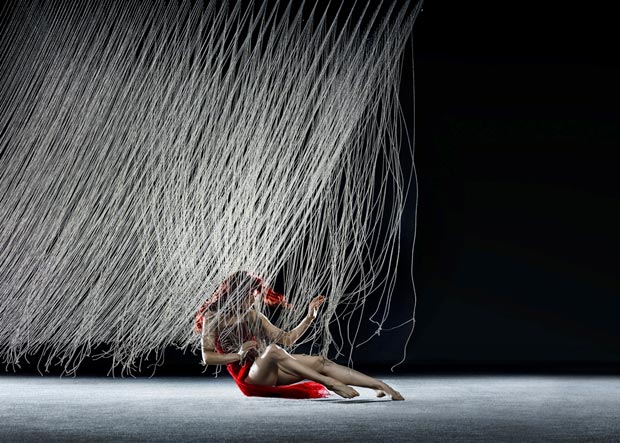
© RJ Muna. (Click image for larger version)
Robert Moses’ KIN
SILT
San Francisco, Yerba Buena Center for the Arts
14 May 2015
www.robertmoseskin.org
www.ybca.org
One of the issues Robert Moses explores in his new work, SILT, is ‘Who has the power to determine what is seen?’ The answer is that the tall people have the power. I know this because I am not one of them. They were among the few who could see the dancers perform the work’s premiere on Thursday, May 14, at Yerba Buena Center for the Arts Forum in San Francisco.
The limited view was by design (favoring the height-advantaged was likely an unintended consequence). For the twentieth-anniversary season of his contemporary dance company, Robert Moses’ Kin, the San Francisco choreographer discarded the organized hierarchy of the proscenium and put dancers and viewers on equal footing in an open auditorium. Instead of on a stage, or any defined territory, Kin’s six men and seven women dancers performed around and through roughly 300 audience members. The result was part rave, part happening, part introvert’s nightmare.
The dancers enacted a mobile assemblage of duets, solos, trios and ensembles, migrating from one corner to another, splintering into multiple focal points, leaning against a wall and forming stock-still phalanxes. It took repeated encouragement from the ushers to get the audience moving with them – the entire floor space was open to all – but before long a critical mass formed, eagerly trailing along, reorienting and clustering around each new performance site. David K. H. Elliott’s artful lighting gave the space ethereal structure. Of those who couldn’t get a useful view, or didn’t care to, some followed their own muse to a far corner while others fiddled with Eugene Korsunskiy’s ball-chain installations at the center of the room. Some people even danced to the pulsing house music composed by Moses and Michael Manring.
By exercising their right to assemble and reassemble, the audience shaped the performance and blockaded the dancers’ paths; Moses must have auditioned for dancers with the Herculean focus required to perform the tightly mapped choreography while navigating 300 random variables. Not infrequently, their navigation was akin to bulldozing. About half an hour into the 75-minute odyssey, I looked up from my notepad just in time to see one of the dancers rumbling straight at me. Already weary of dodging dancing bullets and straining to see through tall people, I decided in a split second that I was staying put. I had already given up my evening; I would not also surrender my chosen place. Again. She bumped me with her hand and hit me with her feet; I mustered my best center of gravity. Ground: held. Seems the performance was also part Gestalt therapy.
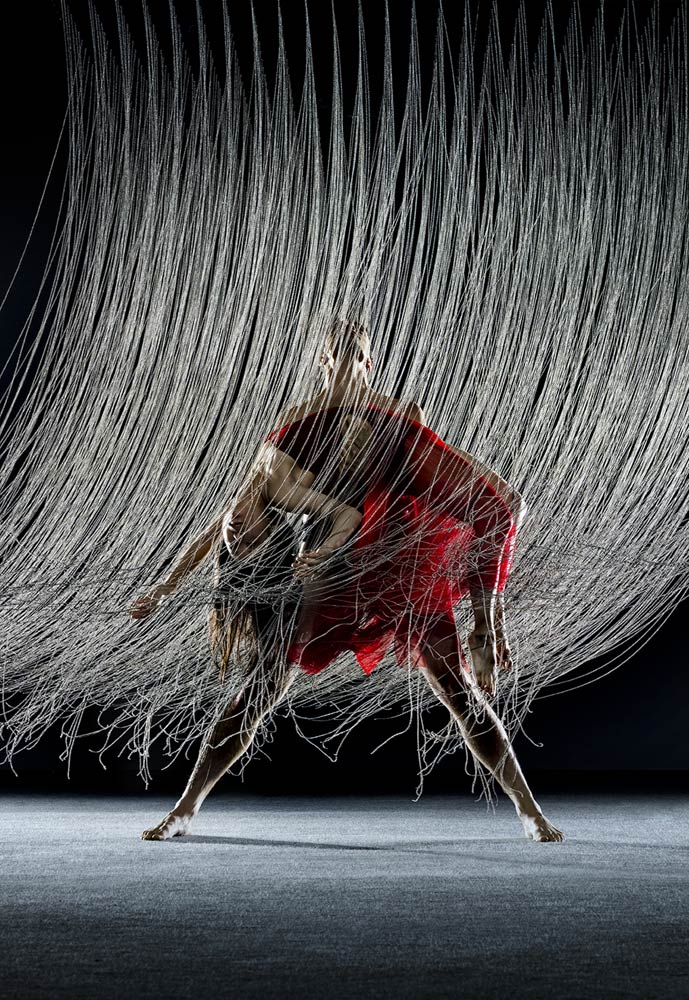
© RJ Muna. (Click image for larger version)
Clad in ruby-red velvet tunics, the dancers were easy enough to spot when not engulfed by those hewing to their every shift (toward the end, a lot of people retired to the floor and watched the remainder of the performance play out). What I was able to chase down struck me as energetic, thematically defined and emotionally focused, but not always noteworthy; seeing more of the whole may have enhanced my appreciation of the parts. At any rate, the choreography ranged from aggressive running through the crowd to high-kicking partnered lifts to intertwined grappling and floor work. Delvis Savigne Frinon and long-limbed Crystaldawn Bell performed a laser-intense duet, while Dexandro ‘D’ Montalvo and Jeremy Bannon-Neches stood out for the quality of their solo movement.
I find it insanely annoying to be approached, touched or intently stared at by dancers in a performance, and that’s my own personal thing. But as a dance lover and critic, I want and need to see what they are doing. Moses is one of many choreographers who have employed the device of, in his words, “compromising the viewer’s ability to see the performance” to cause frustration or trigger rumination on life’s trade-offs; in this case he was perhaps too effective.
The issue Moses explored most successfully in SILT was how to engage audiences more deeply, a topical subject at a time when many people have lost interest in the traditional theater environment. I applaud him heartily for that, and it is worth continuing this experiment to find more inclusive ways to do it. We were invited to take photos and videos on our phones and send them out to the folks at home, which is a fun fix for phone addicts like me. And lots of people took obvious pleasure in co-creating the performance skin-on-skin with the dancers. Those still standing at the end were presumably the ones who valued that the most, and they loudly applauded the entire experience.









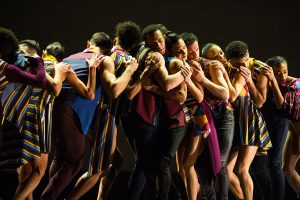


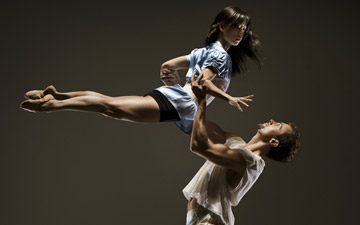
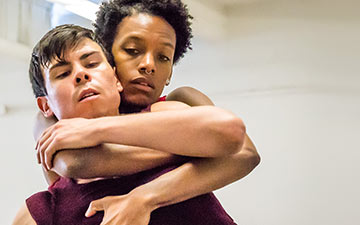


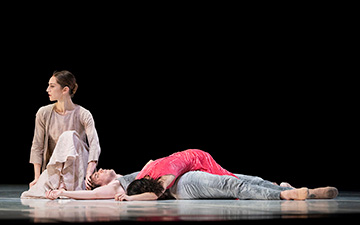
You must be logged in to post a comment.